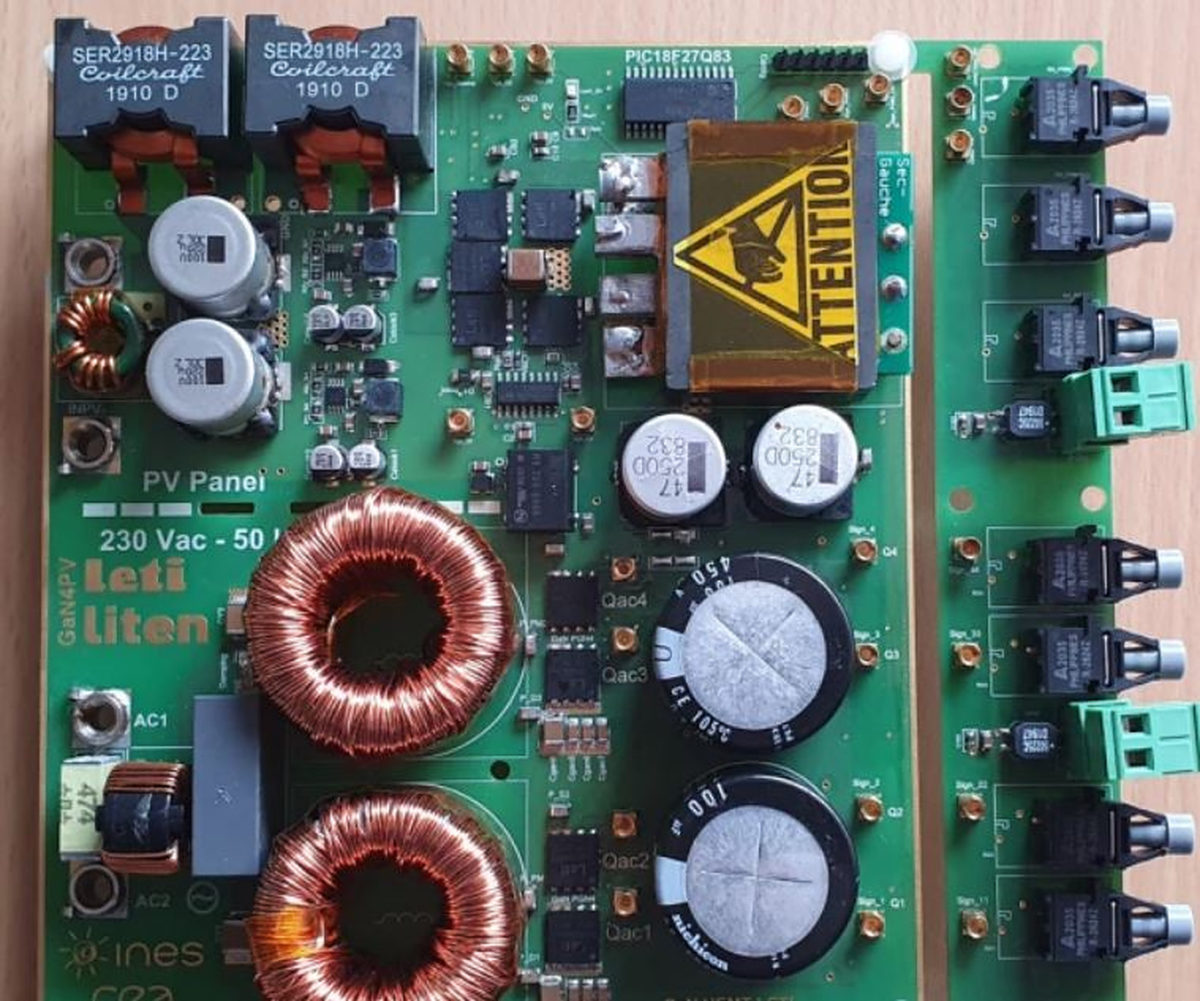Researchers at France's National Solar Energy Institute (INES) – an arm of the French Alternative Energies and Atomic Energy Commission (CEA) – have developed what they claim to be the first prototype of a 400 W photovoltaic microinverter made with gallium nitride (GaN) transistors.
According to its designers, the device has a power density of 1.1 kW/L and an efficiency of 97%.
The micro-inverter utilizes GaN 600V diodes and power transistors developed by CEA's electronic branch CEA-Leti. “With this coplanar technology, it would be possible to make the power component ‘smarter' with protection (temperature, voltage, current, etc.) and control (driver) functions. It is also possible to design bidirectional voltage interrupters which do not exist at present,” the French scientists said in a statement.
They added the microinverter technology consists of two conversion stages — a DC/DC stage comprising 5 GaN 100V transistors and DC/AC stage comprising 4 GaN 650V transistors — without providing further technical details. “This technology is expected to reach the market by 2025-2027,” they specified, noting that a second prototype should be developed this year. “In the meantime, researchers at CEA-Leti and CEA-Liten at INES will improve the technology and develop an integrated digital control system. The team will unveil new prototypes in the coming years.”
String inverters based on gallium nitride (GaN) semiconductors could represent a valid alternative to devices based on silicon (Si) or silicon carbide (SiC) in the future if the industry manages to reduce their size. A consortium led by Fraunhofer Institute for Energy Economics and Energy System Technology IEE is currently coordinating a research project to assess how components of GaN inverters can be further miniaturized, in order to achieve lower production costs.
The primary goal when using GaN in power electronics is usually the optimization and miniaturization of the entire inverter device, including passive components such as cooling systems, casings, and mounting structures.
This content is protected by copyright and may not be reused. If you want to cooperate with us and would like to reuse some of our content, please contact: editors@pv-magazine.com.




By submitting this form you agree to pv magazine using your data for the purposes of publishing your comment.
Your personal data will only be disclosed or otherwise transmitted to third parties for the purposes of spam filtering or if this is necessary for technical maintenance of the website. Any other transfer to third parties will not take place unless this is justified on the basis of applicable data protection regulations or if pv magazine is legally obliged to do so.
You may revoke this consent at any time with effect for the future, in which case your personal data will be deleted immediately. Otherwise, your data will be deleted if pv magazine has processed your request or the purpose of data storage is fulfilled.
Further information on data privacy can be found in our Data Protection Policy.